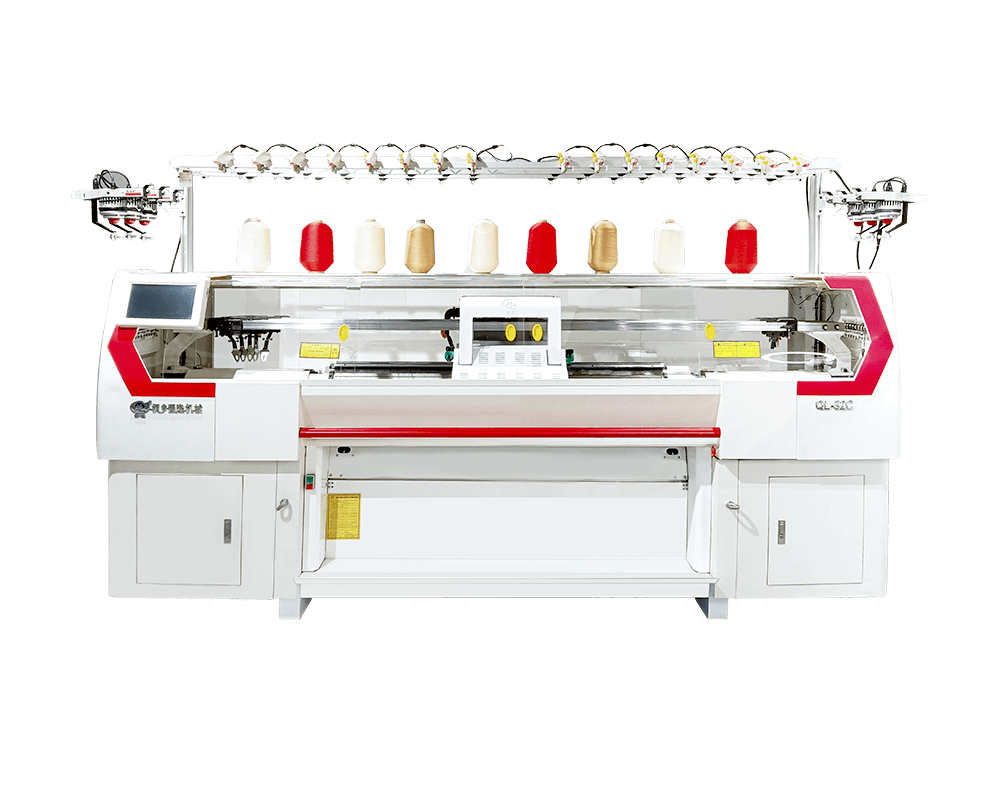Tongxiang Qianglong Machinery Co., Ltd. is high-tech China wholesale computerized flat knitting machine manufacturers, specialized in designing, developing, and manufacturing Knitting Machinery..
Maintenance is essential to ensure the optimal performance and longevity of straight double computerized flat knitting machines. Regular maintenance helps prevent issues, reduces downtime, and ensures that the machine continues to operate efficiently. Here are some common maintenance requirements for these machines:
Lubrication:
Regular lubrication of moving parts is crucial to reduce friction, wear, and tear. Follow the manufacturer's recommendations for the type and frequency of lubrication for various components, including needle beds, sliders, and other moving parts.
Cleaning:

Keep the machine clean from dust, lint, and debris, as these can affect the machine's performance. Regularly clean the needle beds, yarn feeders, and other areas where residues may accumulate.
Needle Inspection and Replacement:
Inspect needles regularly for signs of wear, damage, or misalignment. Replace any damaged or worn needles promptly to maintain the quality of the knitted fabric.
Tension Adjustment:
Check and adjust yarn tension settings as needed to ensure consistent and uniform tension throughout the knitting process. Proper tension is crucial for producing high-quality fabrics.
Check for Loose Screws and Bolts:
Periodically check for loose screws and bolts on the machine. Tighten any loose fasteners to prevent issues related to vibrations and movement during operation.
Electronic System Calibration:
Calibrate the electronic control system to ensure accurate operation. Check and calibrate sensors, motors, and other electronic components as recommended by the manufacturer.
Inspect Belts and Timing:
Check belts and timing mechanisms for wear and proper alignment. Replace any worn or damaged belts to maintain the synchronization of moving parts.
Inspect and Clean the Takedown Mechanism:
The takedown mechanism is responsible for drawing the fabric down. Regularly inspect and clean this mechanism to ensure smooth operation and maintain proper tension.
Inspect and Clean the Needle Selection System:
The electronic needle selection system is a critical component. Inspect and clean the sensors and actuators to ensure accurate needle selection and manipulation.
Check and Clean the Yarn Feed System:
Inspect and clean the yarn feed system, including yarn tensioners and guides. Ensure that yarn feeds smoothly to avoid disruptions in the knitting process.
Inspect Electronic Components:
Regularly inspect electronic components, such as circuit boards and wiring, for signs of damage or wear. Address any issues promptly to prevent electronic malfunctions.
Check Pattern Design Software Compatibility:
If the machine is compatible with pattern design software, ensure that the software is up to date. Regularly update the software to access new features and improvements.
Check Safety Features:
Verify that all safety features, such as emergency stop buttons and protective covers, are in working order. Safety features are crucial for preventing accidents and ensuring operator safety.
Train Operators on Basic Maintenance:
Provide training to machine operators on basic maintenance tasks they can perform, such as needle replacement, lubrication, and cleaning. This empowers operators to contribute to the machine's upkeep.
Follow Manufacturer's Maintenance Guidelines:
Adhere to the manufacturer's recommended maintenance schedule and guidelines. Manufacturers often provide detailed manuals outlining specific maintenance tasks and intervals.
Regular and proactive maintenance practices, combined with operator training, contribute to the overall reliability and longevity of straight double computerized flat knitting machines. Following a comprehensive maintenance routine helps ensure that the machine operates at its best, producing high-quality knitted fabrics consistently.

 English
English 简体中文
简体中文
 Chinese
Chinese English
English











